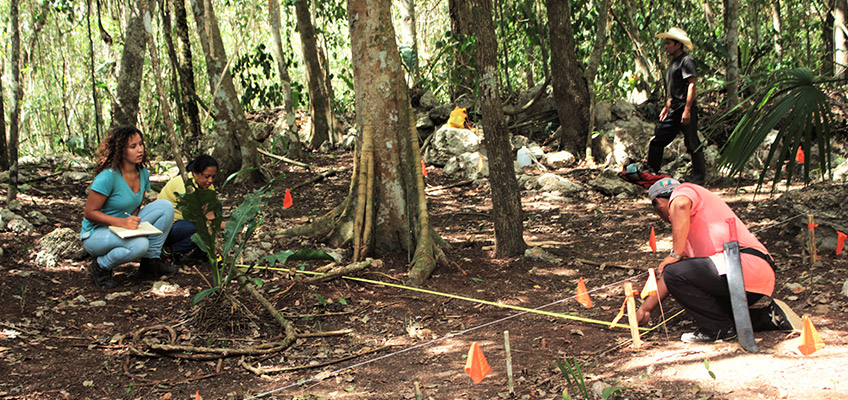Thursday, October 25, 2018 - 12:30pm
Penn Museum / University of Pennsylvania Museum of Archaeology and Anthropology
University of Pennsylvania
Philadelphia, PA

New Research in Mexico: Heritage Work of Two Graduate Students
Hear firsthand accounts of recent research in Mexico at this lunchtime lecture by two Ph.D. Candidates in Anthropology at the University of Pennsylvania.
“Members Only? Common Assumptions, Recognition, and Defining Communities in Engaged Heritage Practice”
Tiffany Cain, Department of Anthropology
Heritage practitioners committed to deep engagement with communities understand that the notion community is a useful heuristic that sometimes masks a far more complex set of relationships than the label suggests. Who we understand as included in the communities we work with may hinge on many axes including identity and social status categories, descent, convenience or proximity, and juridical recognition. Recognition can be especially important when working with indigenous communities. In this talk, I have two aims. First, I explore how the federally-recognized status of the Ejido de Tihozuco—a communal land organization with over 800 members in central Quintana Roo, Mexico—conflicts with some of the ideals we often have about who communities consist of in community-based heritage practices. Is the Ejido sufficiently representative of the community-at-large? I then consider how respecting customs around the appropriate avenues for asking and receiving permissions from a recognized body like the Ejido has allowed members of the Tihosuco Heritage Preservation and Community Development Project to build a strong foundation as a reasonably integrated, mutually beneficial, and sufficiently flexible initiative in the town of Tihosuco.
“Defense, Resilience, and Refuge on the Frontier of a Classic Period Maya Kingdom”
Whit Schroder, Department of Anthropology
In the Usumacinta region of the Maya lowlands, the political relationships among kingdoms were documented in carved monuments from dynastic centers and allied minor centers. The extent of these relationships and how they affected smaller centers and households, however, were not documented in such inscriptions, therefore archaeology, specifically the analysis of architecture, ceramics, and other materials, provides the only data that can address such issues. Excavations at the minor center El Infiernito located 8 kilometers from Piedras Negras, one of the largest dynastic centers in the Usumacinta region during the Late Classic period (AD 550-850), suggest that shifting alliances and borders influenced the importance of households in the defense of the surrounding region. A late occupation of El Infiernito after AD 850 also supports the hypothesis that this site served as a refuge during the period known as the Maya collapse, when the dynastic system of the Classic period was abandoned and population levels decreased dramatically. El Infiernito, therefore, provides a model for the resilience and reorganization of populations and political systems in the region as such major political transformations were taking place. Indeed, though political systems have been unstable, resilience has been a constant throughout the Maya region, as shown in recent efforts of modern Maya populations to assert their power against the state.
Free admission. Bring your own brown bag lunches. For more information, see this link.
Sponsored by the Penn Cultural Heritage Center.

 Native American & Indigenous Studies at Penn
Native American & Indigenous Studies at Penn